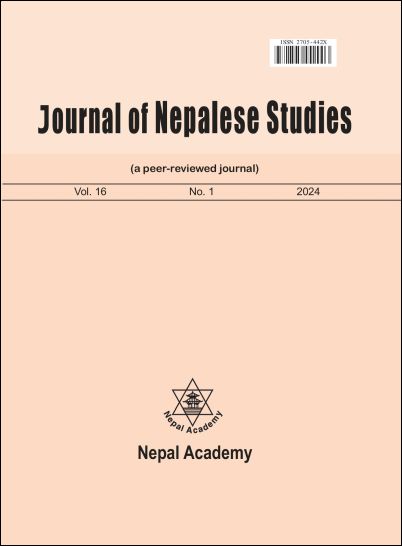Transition of indigenous culture: Reading Mann Gurung’s “Lost in Transition # 6”
DOI:
https://doi.org/10.3126/jns.v16i1.71782Keywords:
Gurung community, remittance culture, indigenous people, transition, visual semioticsAbstract
The paper explores and analyzes the multiple realities underneath the remittance culture in the post-1990 Nepal in Mann Gurung’s painting “Lost in Transition # 6.” Several facets of ambivalence and pain; separation and insecurity; dilemma and loneliness; and dependency and cultural decline are comprehensively portrayed in the paintings exhibited under the title Lost in Transition (2019). Moreover, it highlights the tension between tradition and modernity. When the people of rural Nepali villages are exposed to the global labor market in 1990s, there started an influx of capital. Most of the villagers, who used to produce numerous cash crops and cereals themselves, started buying food and vegetable while totally depending upon market imports along with the flow of remittance. The chosen painting exposes the pervasive remittance culture through the image of a Gurung woman whose traditional attire has been haloed by the bright logos of remittance companies. The indigenous-ethnic community in Khorla village of Gorkha district remains torn between tradition and modernity not necessarily because of their choice but an immensely increasing globalization of the market products. To critically analyze the widespread influence of the global corporate world upon the indigenous people in developing countries like Nepal, I have employed Gunther Kress and Theo Van Leeuwen’s ideas and strategies of visual semiotics and the concept of Nicholas Mirzoeff related to the visual rhetoric and visual culture.




